The Ten Best History Books of 2022
Our favorite titles of the year resurrect forgotten histories and illuminate how the nation ended up where it is today
:focal(800x602:801x603)/https://tf-cmsv2-smithsonianmag-media.s3.amazonaws.com/filer_public/57/b1/57b1038d-e075-43df-973b-923124fbfd96/history-booklist-v2.jpg)
For many, 2022 was a year of momentous change and loss, marked by events that will undoubtedly be discussed in history books for generations to come. Russia invaded Ukraine, launching a war that shows few signs of slowing. Elizabeth II, the long-reigning British queen, died at age 96, marking the end of an era for a once-unparalleled empire. The global death toll for Covid-19 surpassed six million, and in June, the Supreme Court overturned Roe v. Wade, dealing a significant blow to reproductive rights across the United States.
This year, the ten history books we’ve chosen to highlight serve a dual purpose. Some offer a respite from reality, transporting readers to such varied locales as Renaissance Italy, the Nile River and Yellowstone National Park. Others reflect on the fraught nature of the current moment, detailing how the nation’s past—including the military’s racist treatment of Black World War II soldiers and the government’s collaboration with a Mexican dictator—informs its present and future. From a searing exploration of slavery’s lasting consequences to a dual biography of two European queens, these are some of Smithsonian magazine’s favorite history books of 2022.
River of the Gods: Genius, Courage, and Betrayal in the Search for the Source of the Nile by Candice Millard
Where does the Nile, the world’s longest river, begin? It’s a question that’s sparked debate for some 2,000 years, prompting speculation from Herodotus, Alexander the Great and Victorian scientists. Even today, the source of the Nile River remains elusive, with at least one contemporary scholar suggesting the Semliki River over the more commonly cited Lake Victoria.
In River of the Gods, author Candice Millard traces arguably the most famous search for the river’s fabled origins: a series of mid-19th-century expeditions led by polymath Richard Francis Burton and army officer John Hanning Speke. While previous narratives have focused largely on these friends-turned-enemies, Millard’s book adds another central character to the mix: Sidi Mubarak Bombay, a formerly enslaved waYao explorer who played a crucial role in the quest.
Told in the readable style of Millard’s previous books, River of the Gods transports audiences to East Africa, where Burton, Speke, Bombay and their companions faced disease, violence and aggressive wildlife. In one vivid scene, the author recounts how Speke deafened himself while trying to dig a burrowing beetle out of his ear with a pen knife.
Whether these trials were worth it depends on who you ask. As the Washington Post notes in its review, a “fundamental disagreement” over the Nile’s source “would poison the remainder of each explorer’s life.” Speke died in a probable hunting accident (speculated by some to be suicide) in 1864, at age 37, while Burton died in relative obscurity in 1890, at age 69. Bombay died in Africa in 1885 at age 65.
River of the Gods: Genius, Courage, and Betrayal in the Search for the Source of the Nile
The harrowing story of one of the great feats of exploration of all time and its complicated legacy.
The Escape Artist: The Man Who Broke Out of Auschwitz to Warn the World by Jonathan Freedland
When Jonathan Freedland was 19 years old, he attended a London showing of Shoah, Claude Lanzmann’s 1985 Holocaust documentary. Listening to nine hours of testimony from witnesses to the genocide, Freedland was especially struck by Rudolf Vrba, who’d escaped Auschwitz at age 19, becoming one of the few to successfully evade recapture by the Nazis.
Imprisoned for nearly two years, Vrba and fellow escapee Alfred Wetzler broke out of Auschwitz by hiding under a woodpile (laced with petrol-soaked tobacco to throw guard dogs off their scent) near the camp’s edge for three days. The men eventually made their way back home to Slovakia, surviving the arduous trek with help from Polish peasants and resistance members. From there, they turned their attention to informing the world of the atrocities occurring at Auschwitz and other Nazi extermination centers.
More than two decades after he first saw Shoah, Freedland, a British journalist who writes thrillers under the pseudonym Sam Bourne, decided to revisit Vrba’s story, which he deemed prescient for this “age of post-truth and fake news.” Drawing on personal papers, photographs, and interviews with Vrba’s first and second wives, Freedland meticulously outlines his subject’s life and surprisingly controversial legacy.
Vrba, born Walter Rosenberg, believed he could save Hungary’s Jews—the last major group of European Jews to face deportation—by revealing what awaited them at Nazi death camps. “If the Jews knew what was coming,” asks Freedland in The Escape Artist, “what sand might they be able to throw in the gears of the machine that was poised to devour them?”
Wetzler and Vrba wrote a report detailing the Nazis’ carefully orchestrated system of mass murder. Contrary to Vrba’s admittedly naive expectations, the Vrba-Wetzler report failed to spark widespread resistance or prevent the deportations of more than 400,000 Hungarian Jews. The report’s impact was limited by delays in distribution; what Vrba perceived as inadequate responses by Jewish leaders; and Hungarian Jews’ refusal “to believe in the possibility of their own imminent destruction, even, perhaps especially, when that destruction is certain,” according to Freedland.
In the years after the Holocaust, scholars and the Jewish community alike viewed Vrba with a skeptical eye, in part due to his refusal to “serve up a morally comfortable narrative in which the only villains were the Nazis,” writes Freedland. Reminiscing on the night he first heard of Vrba, Freedland writes, “I left the cinema that night convinced that the name of Rudolf Vrba deserved to stand alongside Anne Frank, Oskar Schindler and Primo Levi in the first rank of stories that define the Shoah. That day may never come. But maybe, through this book, [he] might perform one last act of escape: Perhaps he might escape our forgetfulness and be remembered.”
The Escape Artist: The Man Who Broke Out of Auschwitz to Warn the World
The incredible story of Rudolf Vrba—the first Jew to break out of Auschwitz, a man determined to warn the world and pass on a truth too few were willing to hear.
The Grimkes: The Legacy of Slavery in an American Family by Kerri K. Greenidge
On the surface, Sarah and Angelina Grimke had little in common with their brother Henry. Ardent abolitionists who abandoned their Southern roots in favor of the more sympathetic streets of Philadelphia, the sisters abhorred slavery and racial inequality. Henry, on the other hand, was a “notoriously violent and sadistic” enslaver who showed little regard for the three sons he’d fathered with an enslaved woman, writes historian Kerri K. Greenidge in her sweeping biography of the Grimke family.
The siblings may have held vastly different views on slavery. But as Greenidge argues in The Grimkes, Sarah and Angelina couldn’t have adopted such a fervent antislavery stance if not for their “complicity in the slave system they so eloquently spoke against.” After all, the money that funded both their move to Philadelphia and their lifestyle in the new city came directly from their slaveholding relatives. And while the sisters espoused progressive ideals, they certainly didn’t view Black people as equals—a contradiction underscored by Sarah and Angelina’s relationships with their Black nephews, Archibald, Francis and John.
The sisters only learned of their nephews’ existence after the Civil War, but upon doing so, they decided to fund the young men’s education and help usher them into the ranks of the Black elite. This aid came with caveats that Francis, in particular, chafed at, deeming his white relatives “unaccustomed to the ways of colored people.” Two of the brothers, Archibald and Francis, later found fame as activists and intellectuals. But their ties to Sarah and Angelina became strained, with Francis eventually turning down his aunts’ financial support.
Greenidge’s book isn’t the first to profile the Grimke family. But it takes a more critical approach than previous offerings, questioning the rosy view of the sisters as faultless abolitionists and spotlighting lesser-known members of the family like Archibald’s daughter, also named Angelina, a poet, playwright and journalist.
The Grimkes: The Legacy of Slavery in an American Family
A stunning counternarrative of the legendary abolitionist Grimke sisters that finally reclaims the forgotten Black members of their family.
The Divorce Colony: How Women Revolutionized Marriage and Found Freedom on the American Frontier by April White
When Blanche Molineux arrived in Sioux Falls, South Dakota, on November 16, 1902, she had a singular goal in mind: securing a divorce from her husband, Roland. Like other wealthy white women at the turn of the 20th century, she’d settled on Sioux Falls—home to what the press dubbed the “divorce colony”—due to South Dakota’s lax divorce laws. While New York required proof of adultery to end a marriage, this frontier state had far fewer limitations; crucially, it also had some of the shortest residency requirements in the U.S., allowing women to divorce after calling South Dakota home for between 90 days and six months.
Blanche, for her part, had a good reason for wanting a divorce. Aside from the fact that she wasn’t in love with Roland, there was the small matter of her husband’s suspected involvement in two murders, including the killing of Blanche’s onetime lover.
The tangled tale of Blanche’s quest for a divorce is one of four central threads in The Divorce Colony, published by journalist and former Smithsonian editor April White. Filled with lurid details from contemporary newspapers, which breathlessly covered the most salacious divorce cases, the book cleverly examines how these bids for marital freedom reflected broader societal changes in Gilded Age America.
As White writes, Blanche and her fellow divorce-seekers “were not activists. For each of them, the decision to end her marriage was a private one. But what might have been a quiet act of personal empowerment and self-determination became, in the glare of the national spotlight, a radical political act.”
The Divorce Colony: How Women Revolutionized Marriage and Found Freedom on the American Frontier
A fascinating account of the daring 19th-century women who moved to South Dakota to divorce their husbands and start living on their own terms.
G-Man: J. Edgar Hoover and the Making of the American Century by Beverly Gage
In this masterful biography of J. Edgar Hoover, historian Beverly Gage draws on declassified documents, private papers and the FBI director’s own “Official and Confidential Files” to paint a more nuanced portrait of the polarizing public figure. The product of more than a decade of research, G-Man is the first major biography of Hoover in 30 years; at 864 pages, it’s also one of the most comprehensive.
Hoover, who headed the FBI for 48 years, from 1924 until his death at age 77 in 1972, arrived at the agency when it was a “law enforcement backwater, riddled with scandal and failure and controversy,” writes Gage. Under his leadership, the FBI became “a political surveillance force without precedent in American life,” continuously reshaped “according to his own priorities and in his own image.”
A lifelong bureaucrat who sought to protect the FBI from partisan politics, Hoover espoused racist and sexist views that pushed him to exclude women and Black people from the law enforcement agency’s ranks. He treated civil rights leaders like Martin Luther King Jr. and Black Panther Fred Hampton as threats to national security, monitoring them illegally through his Cointelpro program.
Yet Hoover had a softer side, too, particularly when it came to his constant companion and rumored lover, FBI Associate Director Clyde Tolson. Ultimately, Gage concludes, Hoover was both “a confused, sometimes lonely man” and someone who “did as much as any individual in government to contain and cripple movements seeking social justice, and thus to limit the forms of democracy and governance that might have been possible.”
G-Man (Pulitzer Prize Winner): J. Edgar Hoover and the Making of the American Century
A major new biography of J Edgar Hoover that draws from never-before-seen sources to create a groundbreaking portrait of a colossus who dominated half a century of American history and planted the seeds for much of today's conservative political landscape.
Bad Mexicans: Race, Empire, & Revolution in the Borderlands by Kelly Lytle Hernández
The latest book from historian Kelly Lytle Hernández takes its title from a disparaging nickname coined by Mexican President Porfirio Díaz, who served seven terms between 1876 and 1911. Bestowed upon a revolutionary group headed by anarchist Ricardo Flores Magón, the label malos Mexicanos belied the movement’s noble aims, including securing justice for the country’s most marginalized citizens: “poor men and women, mostly miners, farmworkers and cotton pickers, many of them displaced from Mexico when President Díaz gave their land to foreign investors,” according to Lytle Hernández.
Better known as the magonistas, Magón’s followers defied Díaz’s dictatorial regime, objecting to his emphasis on American investment over the well-being of his people. In Bad Mexicans, Lytle Hernández outlines these rebels’ activism and how it paved the way for the Mexican Revolution of 1910 to 1920. Drawing on long-overlooked archival records that center the voices of Indigenous people and women, Bad Mexicans argues that the magonistas and the revolution they helped spark also shaped the United States. The influx of refugees escaping Díaz’s wrath marked the beginning of what has been a century of Mexicans seeking economic opportunity across the northern border.
Lytle Hernández writes, “The history of the United States as a global power cannot be told without Mexico. … The expansion of U.S. economic and political might was hatched in Mexico and, from there, projected across the Americas and, from there, around the world. Díaz’s Mexico was the ‘laboratory’ of U.S. imperialism.”
Bad Mexicans: Race, Empire, & Revolution in the Borderlands
The dramatic story of the magonistas, the migrant rebels who sparked the 1910 Mexican Revolution from the United States.
Half American: The Epic Story of African Americans Fighting World War II at Home and Abroad by Matthew Delmont
On July 17, 1944, an explosion rocked a port in California’s Bay Area, killing 320 sailors and civilians in the deadliest home-front disaster of World War II. Two-thirds of the dead were enlisted Black sailors—men who’d been forced to load heavy munitions onto ships bound for the Pacific without receiving adequate training. After the disaster, when 50 Black sailors refused to continue the dangerous work, the military responded by placing them on trial and sentencing each to up to 15 years in prison.
Half American, by Dartmouth College historian Matthew Delmont, discusses the Port Chicago tragedy as part of a broader exploration of the challenges faced by Black soldiers during World War II. Discriminated against by the very country they’d risked their lives to protect, some of these men and women fought back, going on strike or refusing to comply with “racially unjust orders from officers, military police or local sheriffs,” writes Delmont. Encyclopedic in scope, this immersive tome readily lives up to the description offered by its publisher, emerging as a clear contender for “the definitive history of World War II from the African American perspective.”
Instead of prompting a racial reckoning, Black soldiers’ protests often resulted in court-martials and convictions—a trend that led a prominent Black newspaper, the Chicago Defender, to observe, “From slavery to slave labor has been the fate of the Negro who becomes a soldier or sailor. As a slave, the Negro revolted—fought, bled and died to break the chains that bound him. As slave labor in the Army and Navy, he is doing no less.”
Half American: The Epic Story of African Americans Fighting World War II at Home and Abroad
The definitive history of World War II from the African American perspective.
Saving Yellowstone: Exploration and Preservation in Reconstruction America by Megan Kate Nelson
2022 was a momentous year for Yellowstone, the United States’ first national park. Established 150 years ago, on March 1, 1872, Yellowstone marked this milestone with a slate of anniversary programming and fundraising campaigns. Then, in June, extreme flooding devastated the park, closing it to the public for the first time in 34 years.
Against this backdrop, Saving Yellowstone, the latest work from historian Megan Kate Nelson, a Pulitzer Prize finalist, offered readers the historical context necessary to understand the park’s significance, as well as the challenges it currently faces.
Told from the perspectives of three central figures—geologist Ferdinand Vandeveer Hayden, Lakota leader Sitting Bull and Northern Pacific Railroad financier Jay Cooke—Nelson’s book expertly weaves together explorations of Native sovereignty, environmental preservation and racial tensions in Reconstruction America. Underlying each of these threads is a sense of wonder regarding Yellowstone, whose “exploding mud volcanoes and cliffs made of glass and huge thundering waterfalls” rendered it a “place that was unique in the world,” Nelson tells the Colorado Sun.
Saving Yellowstone: Exploration and Preservation in Reconstruction America
The captivating story of how Yellowstone became the world’s first national park in the years after the Civil War.
Civil Rights Queen: Constance Baker Motley and the Struggle for Equality by Tomiko Brown-Nagin
In 1962, attorney Constance Baker Motley became the first Black woman to argue a case in front of the Supreme Court, defending James Meredith in his quest to gain admission to the University of Mississippi. A protégée of Justice Thurgood Marshall, Motley wrote the original complaint for Brown v. Board of Education, defended Martin Luther King Jr. on contempt of court charges and won nine of the ten civil rights cases she presented to the court.
Before Justice Ketanji Brown Jackson referred to Motley as a source of inspiration, relatively few people outside of the judiciary knew of her—a trend that author Tomiko Brown-Nagin, dean of Harvard Radcliffe Institute, hopes to rectify with the first major biography of Motley. The book, excerpted in Smithsonian magazine earlier this year, offers a new perspective on the civil rights movement, showing how Motley navigated criticism from both white lawyers and Black activists who accused her of being “weak and accommodationist.” While Motley may not have been as radical as Malcolm X, Brown-Nagin argues that she was just as effective as her more outspoken peers.
“So intent on highlighting King, many historians pay too little attention to the legal strategies that helped the movement succeed,” writes Brown-Nagin. “We see a fuller, truer portrait of the civil rights movement when we view it through Motley’s work, which spanned the worlds of lawyering and activism.”
Civil Rights Queen: Constance Baker Motley and the Struggle for Equality
The first major biography of one of our most influential judges—an activist lawyer who became the first Black woman appointed to the federal judiciary—that provides an eye-opening account of the twin struggles for gender equality and civil rights in the 20th century.
Blood, Fire and Gold: The Story of Elizabeth I and Catherine de Medici by Estelle Paranque
The 16th-century contemporaries Catherine de’ Medici and Elizabeth I had much in common. Both wielded power in an age dominated by men. Both had at-times tense relationships with Mary, Queen of Scots. And both showed a single-minded determination to do what they deemed best for their respective kingdoms of France and England.
Still, there were crucial differences between the two. While Elizabeth was the daughter of a king, Catherine was not of royal blood. She “was not born to be queen,” historian Estelle Paranque told Smithsonian earlier this year. “She was not born into power.” The Protestant Elizabeth ruled England in her own right; the Catholic Catherine ruled on behalf of her sons as an unofficial regent. Perhaps most significantly, Catherine dedicated her life to the promotion of her family and, by extension, the preservation of the Valois dynasty. Elizabeth, meanwhile, famously rejected even the possibility of family, remaining an unmarried “virgin queen” until her death in 1603 at age 69.
In Blood, Fire and Gold, Paranque deftly shows how these experiences shaped the women rulers’ relationships with their subjects, advisers and each other. Placed in a unique position that few others could understand, “they might have been rivals, but they were also united in their power, each admiring the force of the other.” Paranque concludes, “Both of them brave and intelligent women, they were unlike any other rulers of the age, and while this might divide them, it would also bring them closer together.”
Blood, Fire & Gold: The Story of Elizabeth I & Catherine de Medici
A brilliant and beautifully written deep dive into the complicated relationship between Elizabeth I and Catherine de Medici, two of the most powerful women in Renaissance Europe who shaped each other as profoundly as they shaped the course of history.
A Note to our Readers
Smithsonian magazine participates in affiliate link advertising programs. If you purchase an item through these links, we receive a commission.
/https://tf-cmsv2-smithsonianmag-media.s3.amazonaws.com/accounts/headshot/mellon.png)
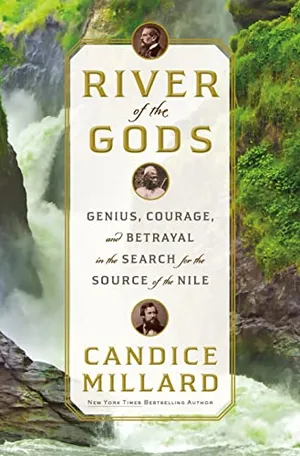
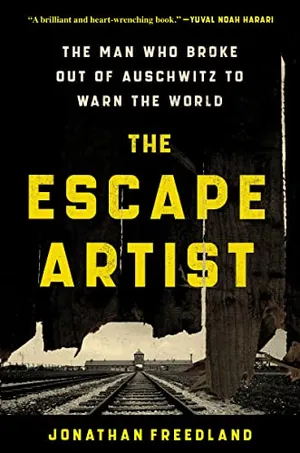
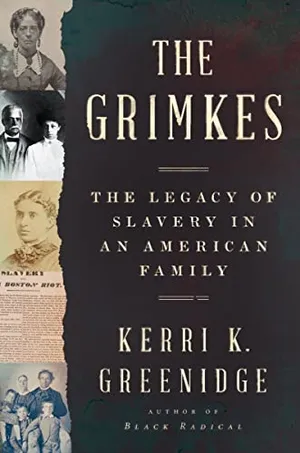
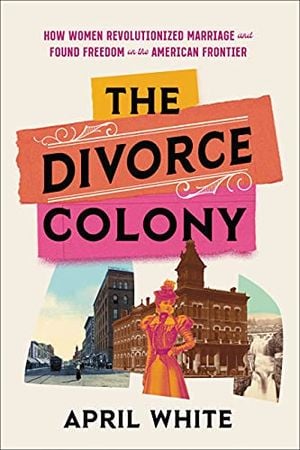
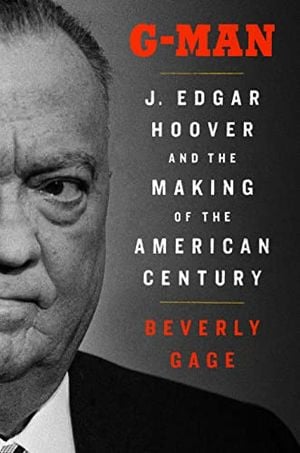
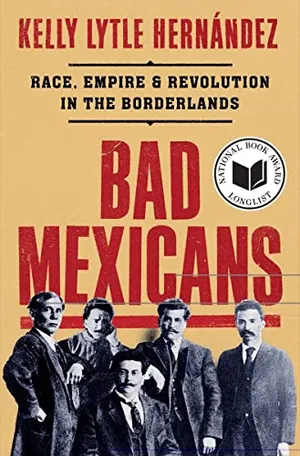
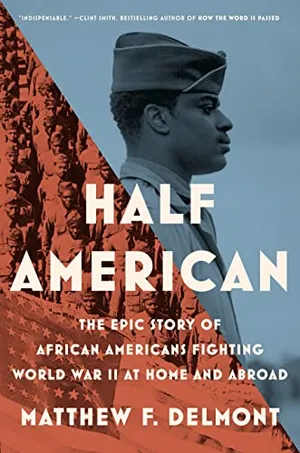
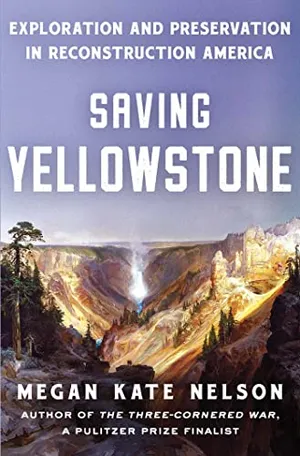
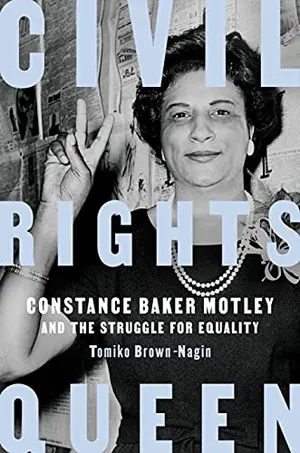
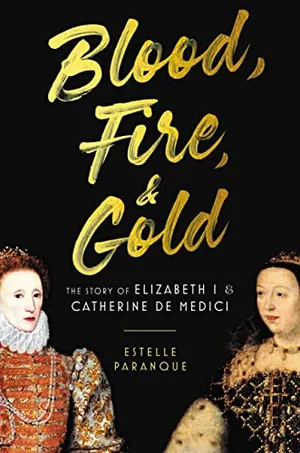
/https://tf-cmsv2-smithsonianmag-media.s3.amazonaws.com/accounts/headshot/mellon.png)